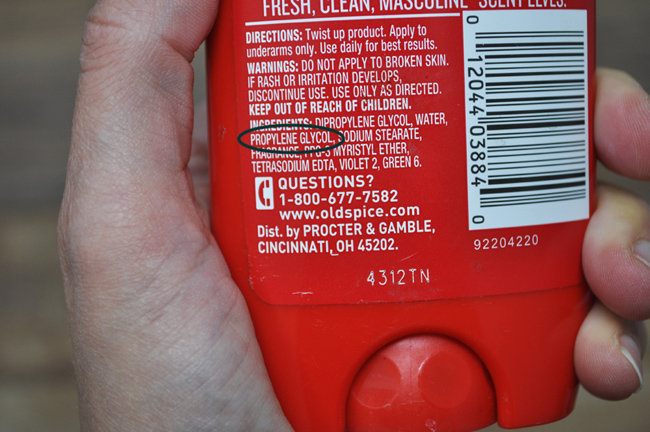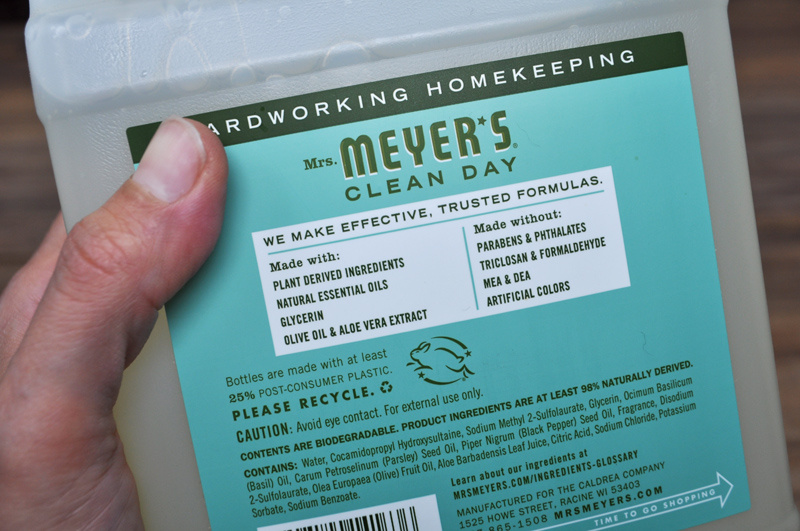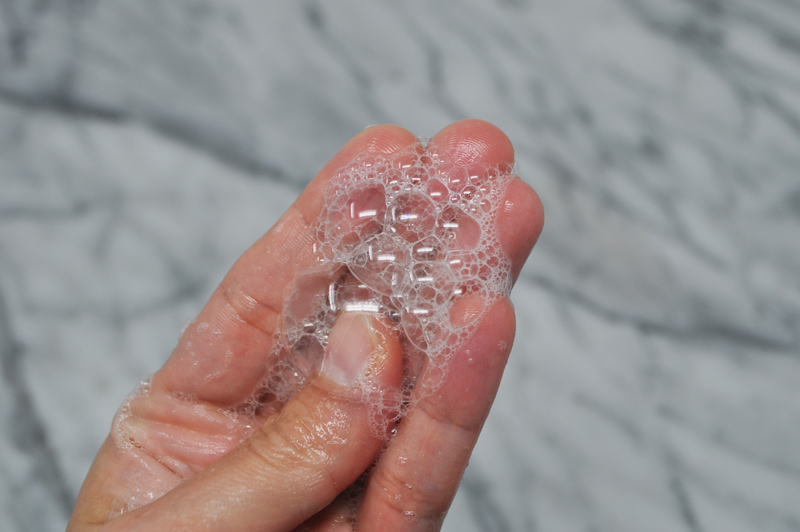7 Toxic Ingredients Hiding In Your Favorite Products

5 Minute Read
Today, ingredient lists on the back of most products are full of words you can barely pronounce, and they look like something out of your 10th grade chemistry class. But do you ever wonder what’s actually in the products you use? Your wrinkle-free shirt, your toothpaste, your lube, even the can of black beans you got at the grocery…
For the most part, you probably think that the government does a good job of studying and regulating toxic ingredients. But the truth is: the USA has only banned 11 ingredients compared to a whopping 1300+ that’ve been banned in Europe. Most of these ingredients have been linked to cancer, immune problems, fertility issues, and skin irritations.
So my goal here is to up the awareness around these toxic ingredients, and encourage you to look at the labels on the back of the products you use, from the processed foods you eat, to your moisturizer, to whatever it is you’ve been using to get loose down there.
I wanna make sure you know what you’re exposing your body to, so you can make the most informed decision, and look for options that don’t contain these ingredients or maybe consider making some of your own products.
Here are 7 toxic ingredients to watch out for:
Sodium Laurel Sulfate
This is what creates the bubbles in many of your cleaning and personal care products
It’s found in: soap, shampoo, toothpaste, detergent, pesticides
Why is it bad? It’s a skin and eye irritant, and has been linked to cancer and endocrine disruption. It’s also toxic to marine life when it washes down your drain
If you’ve ever noticed a rash or irritation on the fingers that you wear rings on, that’s SLS! The ring isn’t the issue. It’s the soap that gets trapped under the ring, forcing your skin to be in contact with SLS for an extended period of time.
**To make sure you know what you’re looking for, check out this article by the spruce to see all of the names SLS can be listed under. Let’s just say, companies are getting “creative” with their ingredient lists.
Phthalates
These are used to make products more flexible or pliable
They’re found in: deodorant, perfume, lotion, nail polish, hair spray, detergent, lubricants, plastics, water resistant clothing (raincoats), adhesives, vinyl flooring
Why are they bad? They can lead to reproductive issues and even cause infertility
**It is not mandated that phthalates be listed on ingredients lists, so it’s a little trickier to identify, especially on things like plastic and clothing.
Propylene glycol
This is used to produce e-cigarettes, polymers, process foods, among other things
It’s found in: soap, shampoo & conditioner, lotion, sunscreen, paint, degreasers, antifreeze, processed foods, e-cigarettes, makeup
Why is it bad? It can lead to cancer; skin irritations; and kidney, liver & respiratory problems

BPA (Bisphenol A)
This is used to harden plastics. Exposure to BPA increases when a product containing BPA is exposed to heat, which causes BPA to leech out of the object
It’s found in: medical devices; a vast majority of plastics; water bottles; the lining of canned foods; and in the past, it has even been used in baby formula
Why is it bad? It can cause cancer, hormone imbalances, behavioral problems, heart issues
**When buying any object that’s made of plastic, make sure the label says BPA free. If a company has taken the extra steps to ensure their products are BPA-free, you better believe they’d make sure you’re aware of it by adding it to their label. Transparency is key.
Dioxin
This is used in the bleaching of cotton (pads and tampons), and in some paper products. It’s also a byproduct of certain manufacturing processes
It’s found in: meat, fish and dairy (since it’s stored in fatty tissues); non-organic tampons; air and water (a byproduct of trash burning, forest fires and chemical runoff from factories); cigarette smoke; herbicides
Why is it bad? Once exposed, it can stay in your body for years/decades. It can cause cancer, infertility, developmental problems, and can damage your immune system
**Since dioxin isn’t really an ingredient, but rather a result of manufacturing, it isn’t something that’s going to be listed on an ingredient list, especially if its something that’s covertly chilling in the meat/dairy you’re buying at the store. It’s more something to be aware of, and to avoid certain products that are likely to have it (like mainstream tampons).
Formaldehyde
This is used to preserve and sterilize things
It’s found in: skin care products, makeup, cigarette smoke, disinfectants, antiseptics, building materials, particle board, plywood, adhesives, food preservatives, the coating of some paper products, wrinkle-free fabrics, and its the substance used to preserve organs (and dead bodies)
Why is it bad? When inhaled or absorbed through the skin, it can cause nausea, skin/eye irritation, and respiratory problems, and it can lead to cancer
**Since formaldehyde isn’t the friendliest of terms to consumers, companies may add other chemicals that have the same effect as formaldehyde (and the same negative effects on the human body). Here are some terms to lookout for on labels: Formalin, Methanal, Oxymethylene, Urea, 1,3-Dioxetane, Quaternium 15, Methylaldehyde, Methylene Oxide, Formic Aldehyde, Oxomethane Formalin, Phenol Formaldehyde
Parabens
These toxic ingredients are used to preserve and prevent bacteria in personal care products
They’re found in: makeup, lotion, body scrub, shampoo
Why are they bad? They can cause allergic reactions, skin irritations, and endocrine disruption (in particular, they mimic estrogen, which can lead to breast cancer and reproductive issues)
**There are countless names for parabens, but like BPA, if a company is doing their due diligence and deliberately not using parabens, they’ll make sure you, as the consumer, know it. Look for personal care products that state that they’re paraben-free, like the one below by Mrs Meyers.

Terms I used that may need some extra clarification:
**Endocrine Disruptor: disturbs your hormone production and regulation, particularly harmful for women who are pregnant or trying to get pregnant, but can be harmful for everyone.
If you have any questions about how to identify toxic ingredients, drop me a comment below.
SUBSCRIBE TO THE BLOG

1 thought on “7 Toxic Ingredients Hiding In Your Favorite Products”